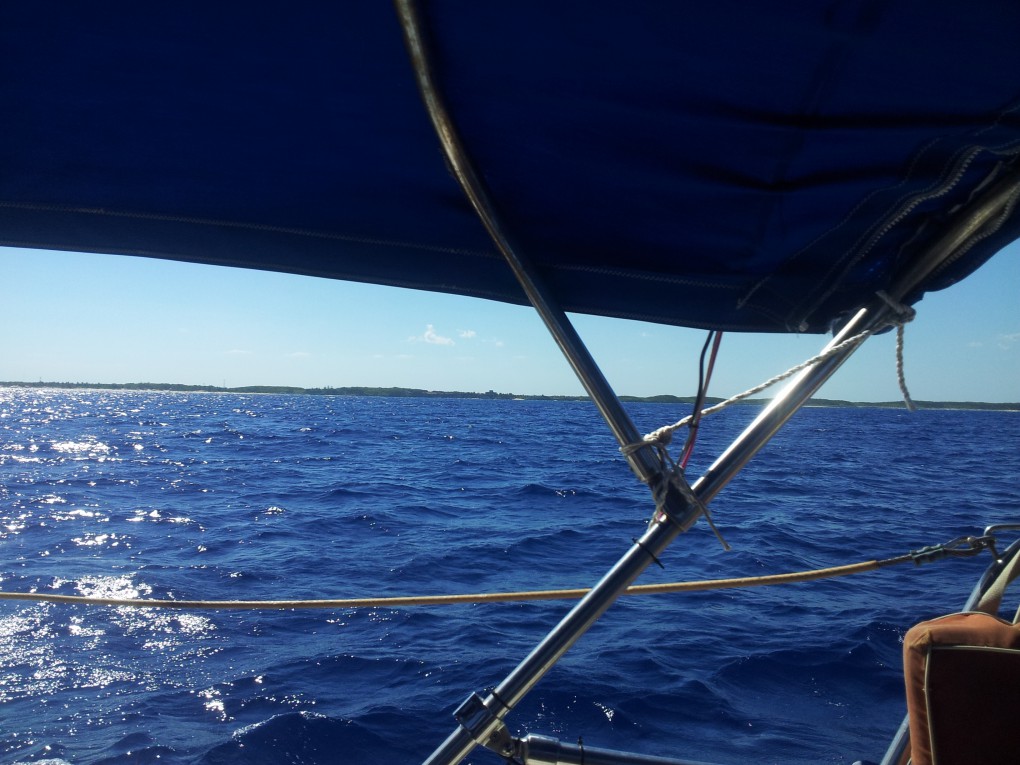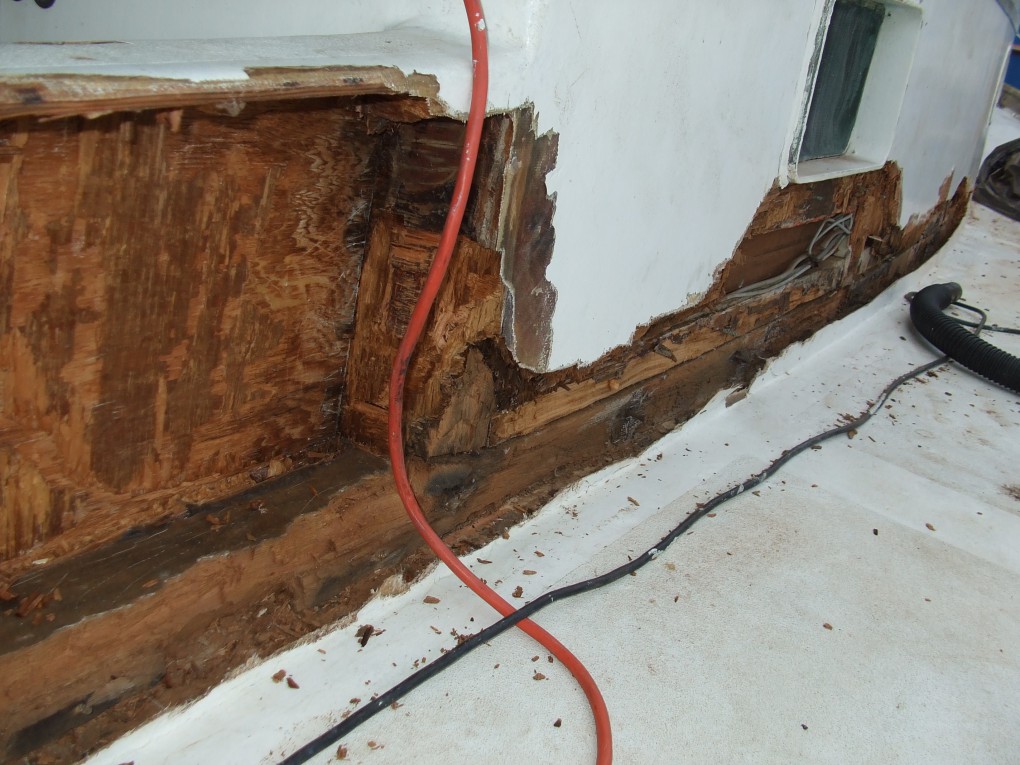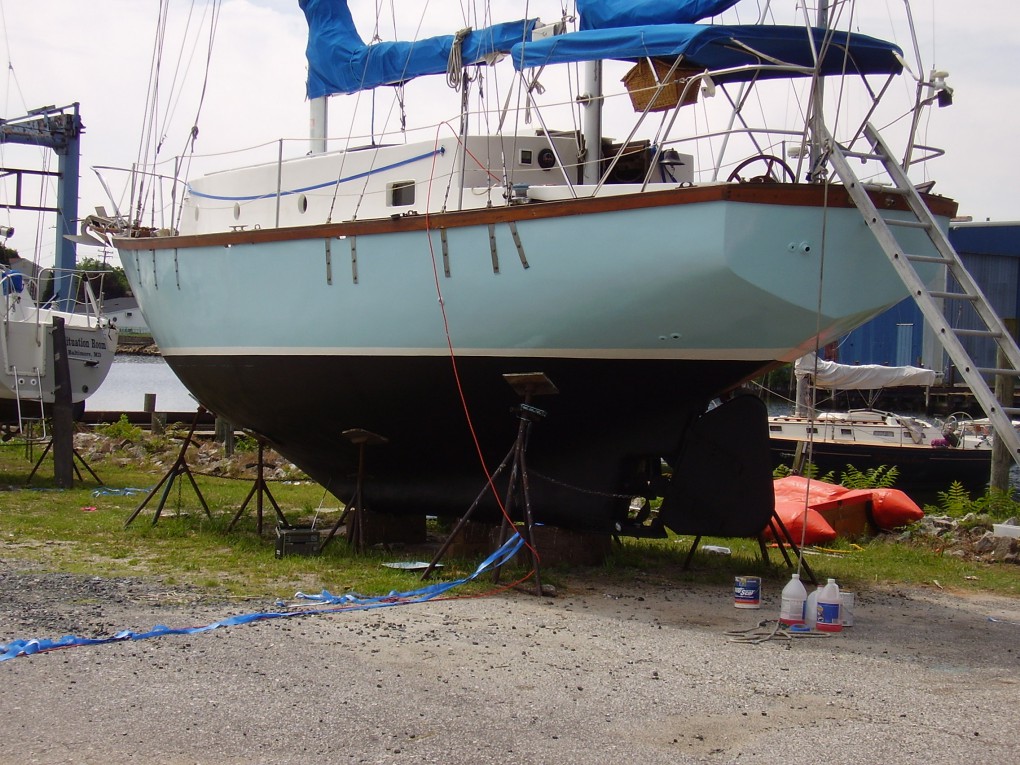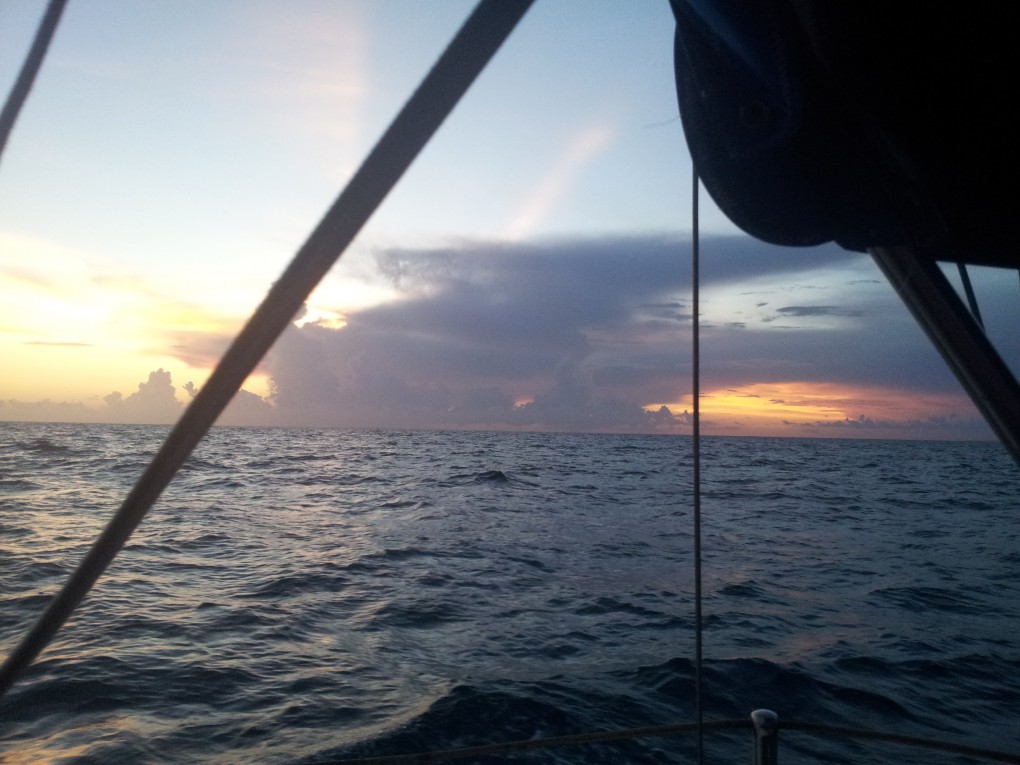Gulf Stream: warm ocean current flowing in the North Atlantic northeastward off the North American coast between Cape Hatteras, N.C., U.S., and the Grand Banks of Newfoundland, Can. In popular conception the Gulf Stream also includes the Florida Current (between the Straits of Florida and Cape Hatteras) and the West Wind Drift (east of the Grand Banks).
Encyclopedia Britannica
When I bought our boat I had little knowledge of what I was about. I could see its obvious strength, and I knew ferro-cement was a literally bulletproof and, in fact, light material. Everything on it seemed overbuilt when I first saw it. It looked as if it could handle anything, but what did I know? There has always been a lingering doubt in the back of my mind that maybe I had got it wrong. Our first real squall was in South Carolina, somewhere near Moon River, when we were pushed sideways across the Intra-Coastal Waterway and had to motor head-on, just to keep off the shoals. We have been thrown about in a few windy showers since, and had tested the boat under full sail until she was overpowered on the Indian River in Florida. But now we were crossing the Caribbean Sea, and the Gulf Stream. During Hurricane Season. In the middle of it, more or less. In a hand-made, one-off boat which had never previously left Chesapeake Bay.
The Unmistakeable Colour of the Gulf Stream (seen here off Tulum, Mexico, 2014)
We often hear of the effects of the Gulf Stream on the weather. Sailors talk, and I have seen this, of a hard line of current where the colour of the water changes. For us, midnight came and went, and we simply found ourselves in it. We first knew about it from calculating that we were getting pushed sideways. We must have entered the Gulf Stream before we had really finished stowing and making ready for a passage we were already on. The helm was needing constant attention, but the night seemed short because of all the fuss of departure. We had been meant to phone or text back to the USA and Dawn and Bill at 11pm, but were far too busy to remember. It was 1am before we had a moment to consider it, and too late by then. Oh well, we’d try when we got there… The watch finally caught me reflecting a bit, in my exhausted state, about what we were doing. This time for reflection is the reason I have taken-up sailing.
There is an inevitability when trapped on a ‘slow-boat’. I believe it is our generation’s responsibility to make the best of our massive privilege. Because of certain experiences I have had, I know every day to be a gift. But with that comes a responsibility. It can be difficult to find peace when there seems so much opportunity for fulfilment of so many dreams.The one place where I feel I am doing justice to this responsibility is when I am communing with ultimate forces; cosmic forces. It sounds hippy, but it’s beyond anything like that. The gulf stream is created by the spinning of the earth; the tides by the moon. The ‘Air Ocean’ we live in glugs, sloshes and whirls because of a combination. As a human, to wind-sail an ocean is to enter a part of one of these liquid forces, to become malleable of mind and fluid of thinking is the only way to survive them. This must be combined with the solid discipline of good principles. Sailing practise has been gradually designed since humans walked the planet to allow them to bob about in this unchangeable stew and live to tell the tale.
Cabin-top Repairs, North Florida, 2010
I caught myself musing that in a good boat, it is possible to cross any ocean in almost any weather, as long as the crew are up to it. I reckoned we were capable, but the stress of whether the boat was up to it was also on me, and has been for the past eight years. I have no formal technical training, and have been on one actual sailing course. So all of our voyaging has always been based on google. We have rebuilt the boat from the keel up, more or less. I have put a whole new engine bed and new engine in. I had no idea how to do it before I tried. We have completely re-wired. We have installed refrigeration, Navigation, rigging changes, re-sheathed the decks, ground-out corrision and re-built ferro-cement areas, installed new tanks – fuel and water, new plumbing, changed ballast, rebuilt sections of the cabin. We have never employed any help, and if anything goes wrong, we will have only myself to blame. Contrary to common belief, there is no such thing as ‘Insurance’ at sea.
Night Sailing in the Florida Straits
There is no doubt that I should be scared, and doubting words constantly ran through my head. I stared into the dark, looking for stars to distract me. Every dock we have ever pulled-up at has had its share of nay-sayers. ‘When did you last replace the rigging?’ ‘Why haven’t you got a fish-finder/chart-plotter/satellite phone?’ etc., etc. But you start to believe it. All I have ever had on my side is a resolve to try and try again, and a determination to not be afraid to fail. I have out-worked all of my companions in boatyards, to make my boat flawlessly strong. It was this stamina – the best years and energy of my life, maybe – which I had to trust in. Nothing more, but also, nothing less. One thing I have learned, I hope, is the value of a job thoroughly done.
Sandpiper when first restored in Baltimore, 2006 (note the old cap rails, later upgraded in Florida)
I had dug-out the ‘Quick Reference Cards’ for recognition of lights, and we passed a couple of ships towards four in the morning. I had seen lights in the far distance and spent minute after minute just making sure they were far enough away in the first place. It is always disconcerting to see ships in the night, mid-ocean. They are always bigger than you, and by necessity faster. There is not always a visual watch to be trusted, and they have to be avoided, or you will die. It is simple. The second of the ships, disconcertingly, was making way on what seemed like a collision course, on our quarter, and at about the same speed. We were converging on a common point, and as time wore on, I started looking for a way to change course without completely deviating from the southerly direction or sailing into the storms I could see. The act of changing sail in the middle of the night can be very tiring indeed, but it is dangerous to ignore a need to do so. If you change course, the wind will hit the boat differently, so sail-change is inevitable.
The ship was coming-up fast and silent. Sailing at night is a quiet business, made quieter by the contrast when you switch the engine off for the first time. There is always a creak or knocking to accompany the slosh of water along the side, but nothing more if the wind is mild. So it can be unsettling to see a set of lights coming towards you in the silence and know that it is a big factory ship, with lots of noise and smell which could suddenly be upon you.
We later found out from Vito, who had an AIS ship-recognition system, that this ship was probably a coastguard or navy launch, just curious. After an exhausting hour or so, it turned to port and virtually disappeared, but I wish they wouldn’t do that.
Vito, who made the same passage the week before us, had also encountered a raft of Cubans making for the USA and a new life. We saw some lights which disappeared in the night mysteriously, but all we heard was a bulletin from the US Coastguard that they were out there still. The boat was heaving along in the swell, and had a healthy heel for much of the night. It felt really good for her to move under our feet in this ‘stiff’, strong way. Slowly, years of theorising about her sea-kindliness in heavy weather was being confirmed, doubts refuted, and apart from the fatigue and seasickness, it felt like the boat could go on forever. Why stop at Cuba?
We started to adopt a hour-on hour-off watch system towards of dawn, and Dorry took the helm to let me rest for several decent periods. There was enough moonlight through the clouds to see the couple of showers in our path in the night, although it was impossible to see the famous blue of the Gulf Stream water until daylight. We managed to get onto the back of the showers, and as dawn came, more appeared, pushing us eastwards as we tried to avoid them. This ‘easting’ was making our voyage longer than it should have been, and we realised as the morning wore on, that we’d be hard-pushed to make it into Cardenas if we didn’t get a move-on. It was only meant to take eighteen hours or so, but with a short-handed ketch in the squalls which ensued, our passage was slow-going. It was quite exhausting getting the reefs in and out as the showers came and went. In the end, we took on the last squall under full sail, but for the entire passage, we didn’t dare use any foresail but the working jib, and there were long periods of calm in-between the 35 knot blows.
At some point during one of these lulls – probably at around 7.30am, we started-up the engine and ran it for a couple of hours. We started making six knots again, motor-sailing with just a little power on, but we were still heading too far east towards Cay Sal – The Bahamas. We had bought a Bahamian courtesy flag, in case we needed to anchor off in Cay Sal, but I had no intention of going ashore in case we were hit by a $300 cruising permit fee.
Squally weather convecting over the Cay Sal Bank, Western Bahamas.
No, Cuba it was, but shower and ship-avoidance in the night had put us quite close to the Banks, which seemed to stay on our beam for an age. A warship passed us – on its way, probably from San Diego, through Panama, and up to Norfolk, Virginia, maybe. It was intimidating to see its flat ‘stealth’ lines, and good to see its transom disappearing on the horizon to port. At some time after about ten o’clock, I took over from Dorry, and it was soon after that the first squall hit us. We had shaken out reefs from foresail and main, as we were getting worried about making it to Darsena in daylight. We had read too much, and listened to too many theories about ‘going-with-it’ across the gulf stream, and now we were too far east. The wind nearly always comes before the rain, but a few fine spots started to hit us on this occasion. I ran up forward to try and reef the foresail, and Dorry did a heroic job of keeping the course. The rail was in the water, and Sandpiper was on her pins before I had even got clipped-on and up-forward. I unloosed the foresail halyard from the winch and swung forward, still holding onto it to keep control, as I find this Waterworld Tarzan approach works well with our high coachroof. I was getting thrown about all-over the foredeck, but managed to hook a foot under the lifelines and hold onto the sail. If Dorry lost the course now, I’d be chucked overboard by the sail. The only way I could see to douse the sail was to stand on it – we have hank-on, not roller reefing, and so the foresail reefs along the foot. Amidst the cacophony of flapping sail, I managed to hook the reefing clew on, untie the sheet, and tie it back onto the reefing tack. This was the umpteenth time I had been up to the foredeck to do this, and I was cursing not having crew with the wind in my teeth as I came back to the cockpit.



